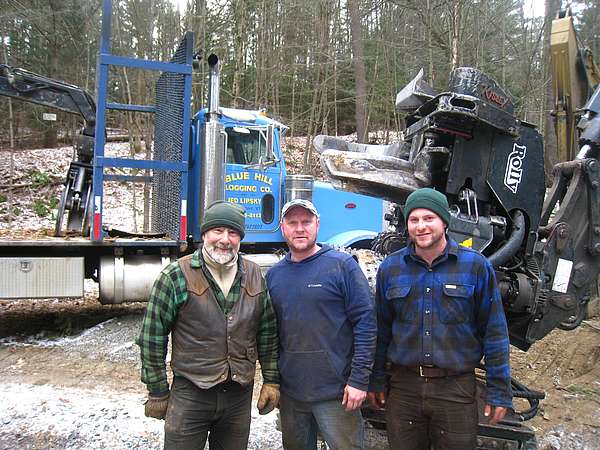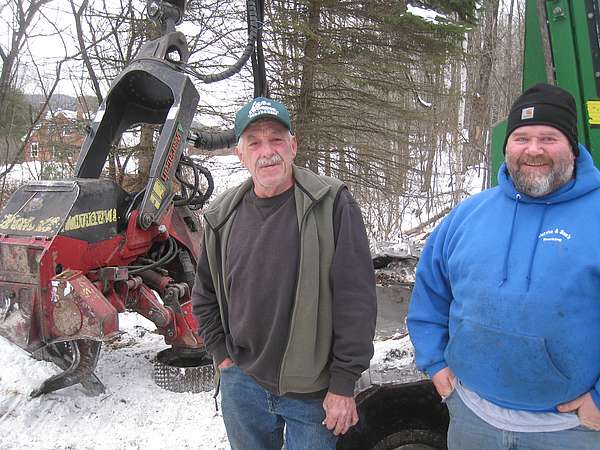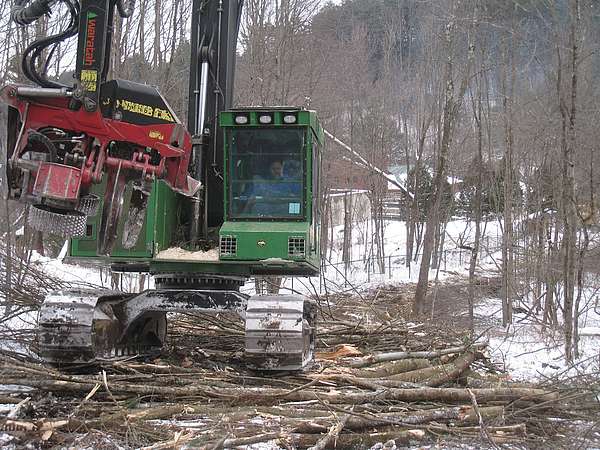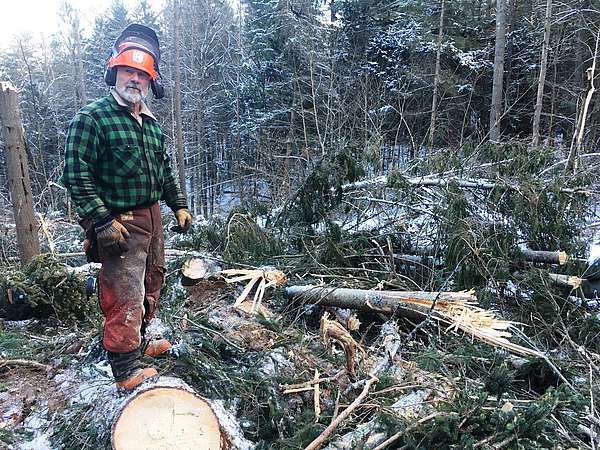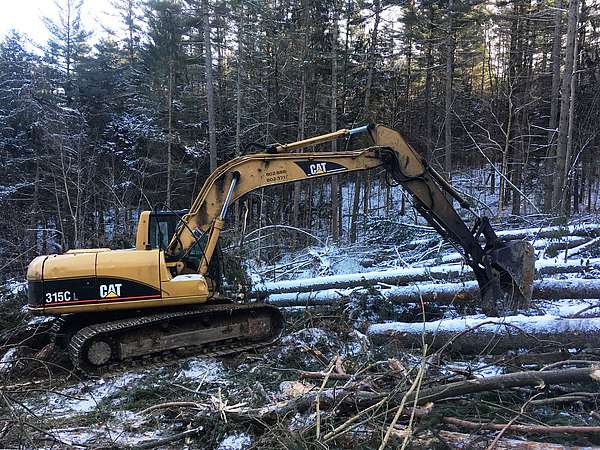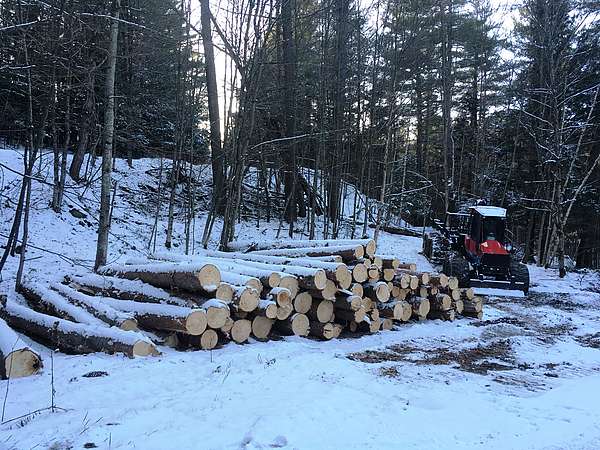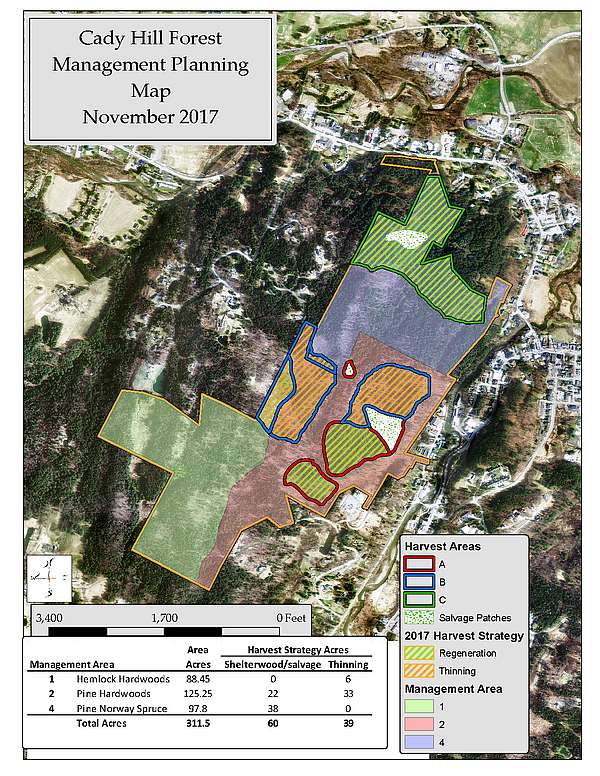by Kristen Sharpless, Conservation Program Manager
It’s been over 20 years since logging equipment was last in Cady Hill Forest. Now, it’s back.
Last week, Jed Lipsky and his local crew from Blue Hill Logging Co. began a contract with the Town of Stowe to salvage and harvest about 38-acres of forest on the SLT-conserved property affected by the October 30th windstorm. Lipsky will be working in the northern section of the property around Cady Hill Climb through December 23rd, and another logging contractor, Brian Lafoe of Orleans County, is scheduled to start cutting within 55 acres located around Charlie’s Trail later this week.
Although the primary objective is to clear the tangle of trees that are blocking the property’s 11 miles of trails, the project is designed to meet other goals as well: managing for high-quality timber, improving tree vigor and growth, and enhancing wildlife habitat quality and diversity.
Generally, this will be accomplished by removing most - but not all - of the fallen trees and cutting some additional standing low-vigor, high-risk trees in a configuration that creates a new variety of more complex growing and habitat conditions in a forest that, up until the windstorm, was fairly simple and uniform.
Cutting with Confidence
A lot of work has gone into getting Lipsky and Lafoe moved in and ready begin work.
Shortly after the extent of the windstorm’s damage became clear, the Town enlisted the help of Lamoille County Forester, Rick Dyer, and consulting forester, Allan Thompson of Northern Stewards LLC, to coordinate with the Stowe Trails Partnership and Stowe Land Trust on making a plan for how to clear the trails. Working with a logger on a salvage operation was quickly identified as the preferred approach. Rather than hiring a contractor to clear the trails, the trees could help pay their own way out of the woods.
The foresters rapidly inventoried and mapped the wind-damaged areas, prepared a forest management plan, estimated the value of the timber, and started showing the project to potential loggers.
The loggers were selected based on their interest, experience, and equipment. Each signed a contract with the Town that specifies the project area and layout, a breakdown of payments, timeline, insurance requirements, and closeout activities. The foresters also worked with neighbors – particularly Golden Eagle Resort - to identify places for stacking logs as well as access for equipment and trucks, and marked out skid trails, stream crossings, and trees to be salvaged and harvested.
All this behind-the-scenes work before any trees are cut is essential for ensuring the success of any timber management project.
Good planning and communication with clearly defined roles and responsibilities mean that the foresters, loggers, and the community can all have confidence that the cutting happening at Cady Hill Forest will meet the short and long-term conservation goals for the property.
What will it Look Like?
Now that cutting has begun, the changes to the forest are instant and dramatic. The mechanized harvester and other equipment are designed to quickly cut and move large volumes of wood. And that is exactly what they are doing. Although they are on tracks and working on frozen ground, the heavy machines still leave their mark, exposing soil and crushing branches and limbs that they pass over.
A few groups of blown-over trees will be salvaged, leaving three 2 to 5-acre openings in the forest behind. During the logging and in the first few years afterwards, these areas will look raw and messy.
Some of the “mess” will be left behind intentionally.
Retained tree tops and branches and a few logs will provide cover and perch sites for birds and other wildlife, drawn to the sunny openings to feed on insects and berries. Left high and intact rather than lopped to the ground, they will also protect new tree seedlings from deer browse, so that by 5-10 years after the harvest, we hope that the openings will be transformed into dense thickets of new trees – the next generation of the forest.
Outside of these openings, the loggers are cutting and clearing individual and small groups of trees selected by the foresters for removal. A combination of thinnings and shelterwood harvests will focus on removing low-quality and/or commercially-mature trees, leaving behind a tall, broken forest canopy of more vigorous, healthy trees. The breaks in the canopy will let sunlight hit the forest floor, triggering seedling growth. The changes in these areas are likely to look and feel less dramatic, but will still be significant.
Again, the forest will look rough and raw for several years post-harvest, but ultimately has the potential to be a more diverse and vibrant place.
One risk of opening up the forest canopy in this way is giving invasive plants – like the Japanese barberry at Cady Hill Forest – a leg up. Ongoing monitoring and control efforts will be critical for ensuring that the new growth in the forest is dominated by a diversity of native, non-invasive plants, rather than a monoculture of invasive plants like barberry.
The Good of Wood
Having to respond to the wind disturbance at Cady Hill Forest has reminded us that the economic value in trees also has the capacity to fund other uses of the forest that are important to us and come with a price tag – like recreation.
In this case, the very trees that are blocking the trails at Cady Hill Forest are helping to pay for clean-up efforts.
What could have been an overwhelmingly expensive recovery becomes less so. In other cases, a proactive approach to timber management on public lands has the potential to generate revenue that can be intentionally funneled back into access improvements, new trail construction, and critical maintenance. This integrated approach to timber and recreation management has been realized successfully on town and state forests for generations.
However, without a vibrant forest products economy our options start to fall off the table.
Without our local and regional loggers, truckers, mills, and wood markets, we’d have no one to harvest, deliver, process or pay for the wood growing in our forests. We’d also miss out on the opportunity to access local sources of wood for all the beautiful, durable, and practical uses we enjoy from lumber to furniture to firewood. Unfortunately, as Vermont’s forest products industry struggles under a growing complex of economic, social, and ecological stressors and pressures, we are nearing a critical tipping point where the whole system is in danger of falling apart. If that happens, we would be left with a very different and more limited landscape of options for our forests, as well as recreation economy and trails.
So, as the logging at Cady Hill Forest continues, now is a good time to consider the benefits careful timber management and harvesting bring not only the immediate effort of reopening the trails, but also to our broader local and regional economy and conservation efforts.
As we move forward, we can and should continue to look for creative opportunities to tie together activities that may initially seem at odds and to keep all our options open.
